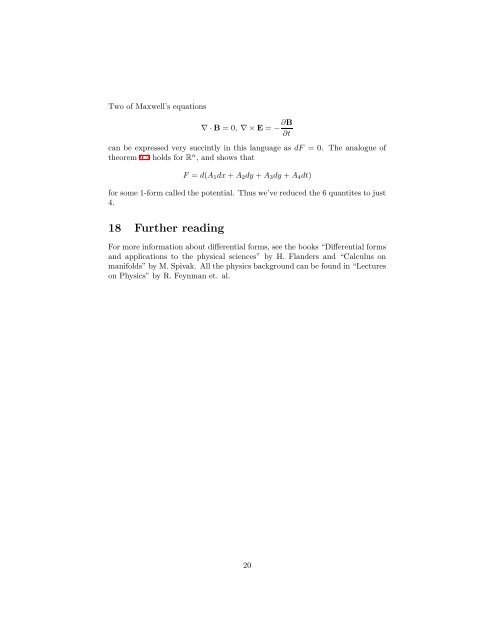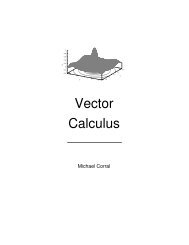Introduction to differential forms
Introduction to differential forms
Introduction to differential forms
Create successful ePaper yourself
Turn your PDF publications into a flip-book with our unique Google optimized e-Paper software.
Two of Maxwell’s equations<br />
∇ · B = 0, ∇ × E = − ∂B<br />
∂t<br />
can be expressed very succintly in this language as dF = 0. The analogue of<br />
theorem 9.2 holds for R n , and shows that<br />
F = d(A 1 dx + A 2 dy + A 3 dy + A 4 dt)<br />
for some 1-form called the potential. Thus we’ve reduced the 6 quantites <strong>to</strong> just<br />
4.<br />
18 Further reading<br />
For more information about <strong>differential</strong> <strong>forms</strong>, see the books “Differential <strong>forms</strong><br />
and applications <strong>to</strong> the physical sciences” by H. Flanders and “Calculus on<br />
manifolds” by M. Spivak. All the physics background can be found in “Lectures<br />
on Physics” by R. Feynman et. al.<br />
20








